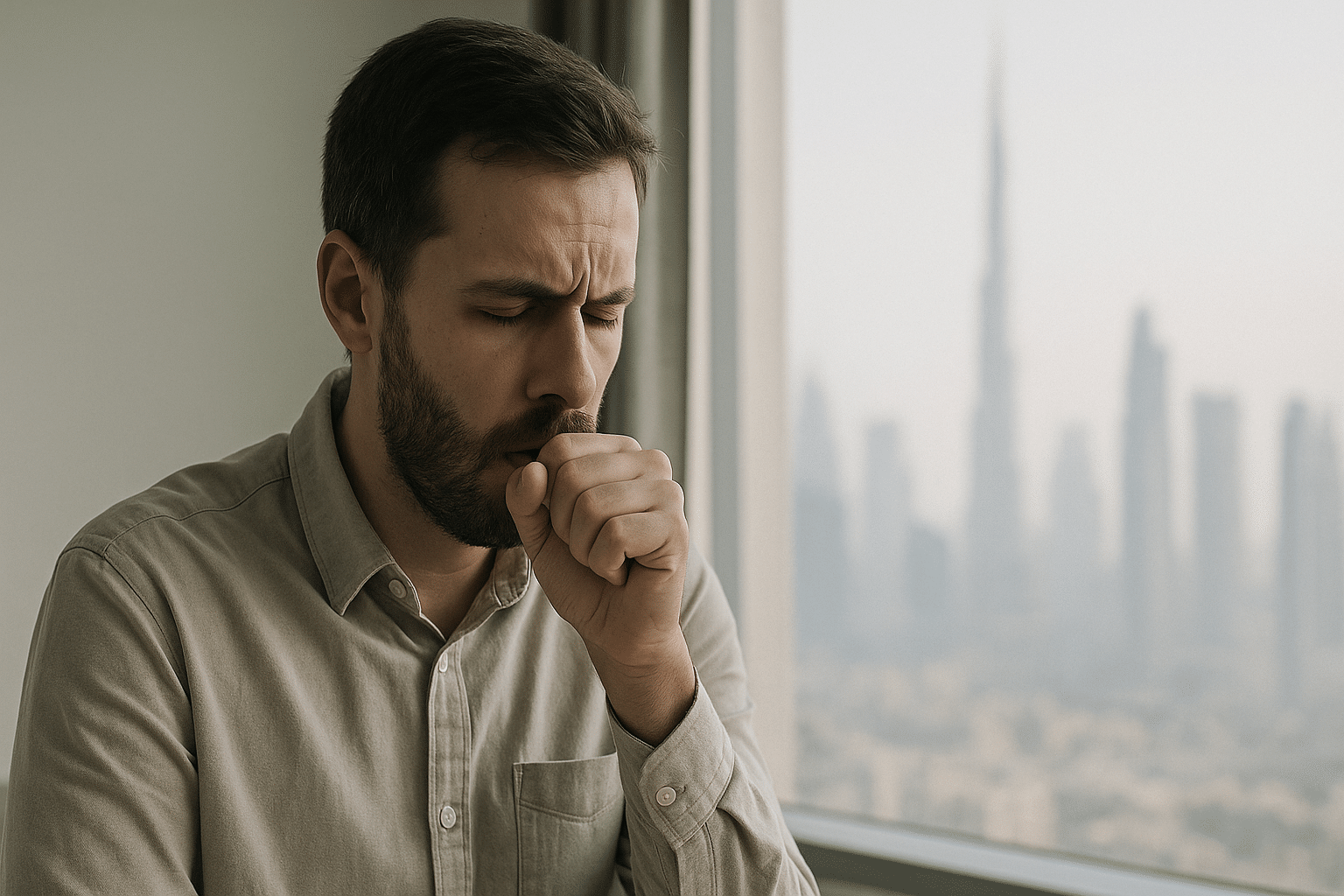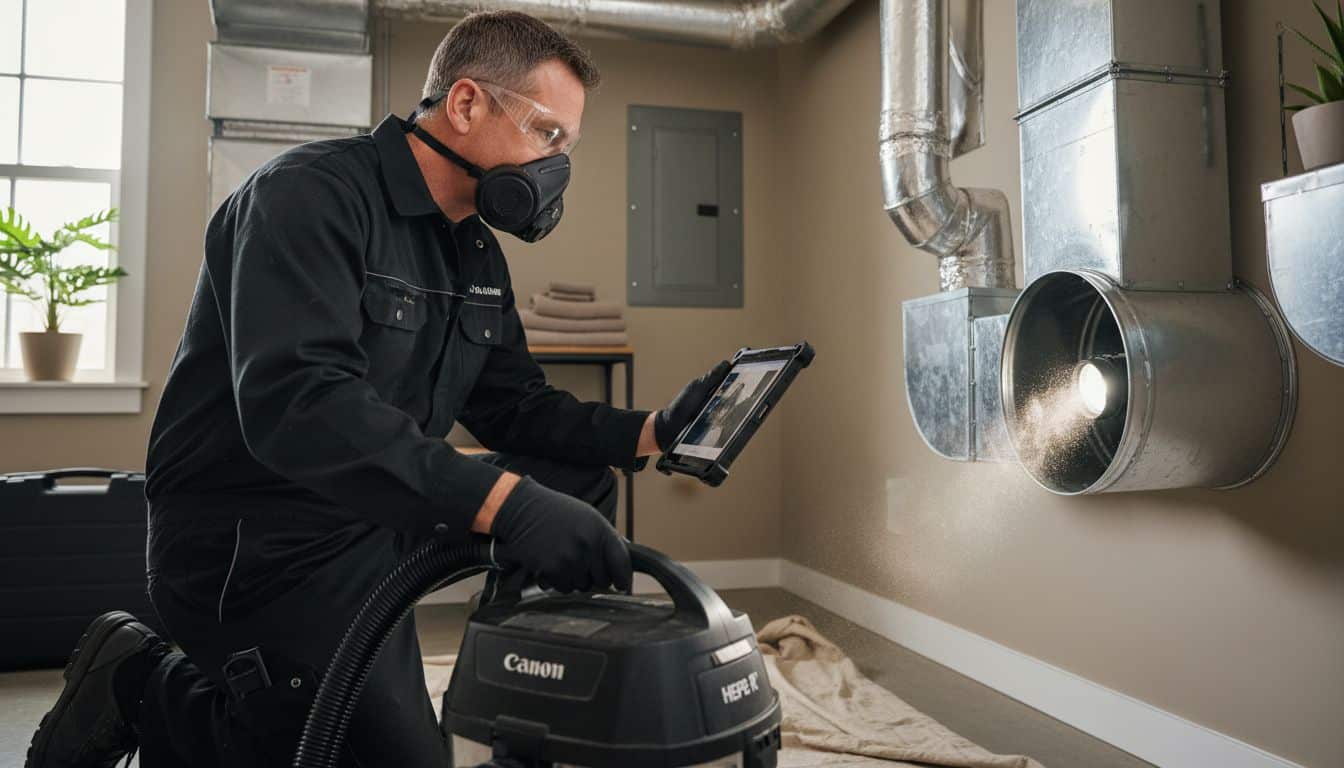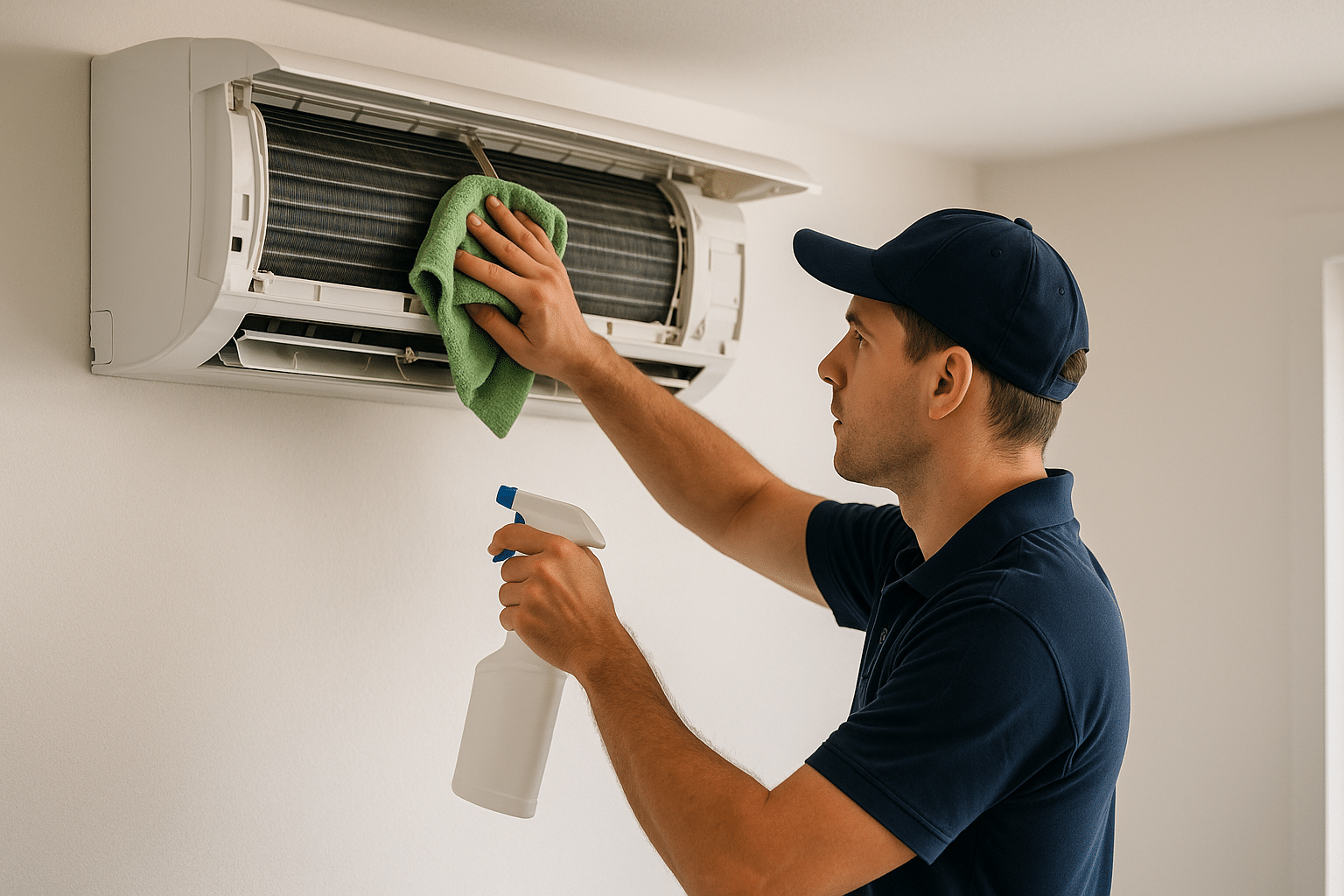
10 Critical Health Risks of Poor Indoor Air Quality Dubai and How to Protect Yourself
Table of Contents
Contents
- 1 Table of Contents
- 2 Introduction to Health Risks of Poor Indoor Air Quality Dubai
- 3 Common Sources of Indoor Air Pollution in Dubai
- 4 Top 10 Health Risks Associated with Poor Indoor Air Quality Dubai
- 5 Why You Should Clean Your AC Regularly in Dubai
- 6 FAQ About Indoor Air Quality and AC Cleaning in Dubai
- 7 Benefits of Clean Indoor Air Quality in Dubai
- 8 Conclusion and Call to Action
- 9 Health Risks of Poor Indoor Air Quality Dubai: A Deeper Look
- 9.1 Common Indoor Air Pollutants in Dubai
- 9.2 Short-Term Health Effects
- 9.3 Long-Term Health Risks of Poor Indoor Air Quality Dubai
- 9.4 Vulnerable Populations and Their Specific Risks
- 9.5 Environmental and Lifestyle Factors Amplifying Risks in Dubai
- 9.6 Strategies to Mitigate the Health Risks of Poor Indoor Air Quality in Dubai
Introduction to Health Risks of Poor Indoor Air Quality Dubai
The health risks of poor indoor air quality dubai are a growing concern due to the city’s dense urban environments, hot climate, and reliance on cooling systems like air conditioning. Indoor air pollutants can exacerbate respiratory problems, allergies, and other serious medical conditions if left unmanaged. Understanding these risks and their causes is essential to protect your health, especially in Dubai’s unique climate and lifestyle context. For more detailed insights on how to mitigate these, explore our guide on managing the health risks of poor indoor air quality Dubai.
Common Sources of Indoor Air Pollution in Dubai
Dubai residents spend the majority of their time indoors, particularly indoors cooled by air conditioning, making indoor air quality crucial. Understanding common sources is key to tackling the health risks of poor indoor air quality Dubai residents face. Pollutants can originate from a variety of sources, including:
- Air Conditioning Systems: Poorly maintained AC units accumulate dust, mold, and bacteria that circulate indoors.
- Building Materials and Furnishings: VOCs (volatile organic compounds) from paints, carpets, and furniture contribute to indoor air contaminants.
- Cleaning Products and Chemicals: Many household cleaning agents emit harmful fumes.
- Outdoor Pollutants: Dust storms common in Dubai can infiltrate buildings when doors or windows are opened.
- Human Occupants: Activities such as cooking, smoking, and using perfumes add particulate matter and gases.
Addressing these sources requires both behavioral changes and mechanical solutions like professional AC cleaning services, which we will discuss later.
Top 10 Health Risks Associated with Poor Indoor Air Quality Dubai
Recognizing health effects linked to poor indoor air quality is the first step towards prevention. Here are the top 10 health risks of poor indoor air quality dubai residents should be aware of:
- Respiratory Infections: Pollutants create an environment conducive to viruses and bacteria, increasing upper and lower respiratory infections.
- Asthma Exacerbation: Dust, mold, and chemical irritants worsen asthma symptoms, a condition prevalent in Dubai and the wider UAE.
- Allergic Reactions: Indoor allergens such as dust mites and pollen trigger sneezing, itching, and watery eyes.
- Chronic Obstructive Pulmonary Disease (COPD): Long-term exposure to poor air quality can contribute to the development and progression of COPD.
- Headaches and Fatigue: Polluted indoor air can reduce oxygen levels, leading to headaches, dizziness, and tiredness.
- Skin Irritation: Exposure to airborne chemicals may cause dry skin, rashes, or other dermatological issues.
- Eye Irritation: Indoor pollutants often lead to dry eyes, redness, and discomfort.
- Cardiovascular Problems: Emerging research links air pollution exposure to increased risk of heart attacks and hypertension.
- Reduced Cognitive Function: Poor air quality can impair concentration, memory, and productivity.
- Increased Risk of Lung Cancer: Long-term inhalation of some indoor pollutants correlates with heightened lung cancer risk.
These risks underscore why maintaining clean indoor air, especially through proper maintenance of air conditioning, is vital in Dubai’s environment.
Why You Should Clean Your AC Regularly in Dubai
One of the key contributors to the health risks of poor indoor air quality Dubai residents face is contaminated air conditioning systems. The use of AC units is nearly constant due to Dubai’s hot climate, making it a critical focal point for air quality management.
AC Contamination and Health Impact
Dust, mold spores, bacteria, and even viruses can accumulate inside AC filters and ducts. When the AC operates, it circulates these contaminants throughout indoor spaces, directly contributing to the health risks of poor indoor air quality Dubai is known for, causing or worsening many of the health risks listed above.
Frequency and Benefits of AC Cleaning
Experts recommend regular AC cleaning to reduce buildup and improve air quality. Benefits include:
- Reduced levels of indoor airborne pollutants.
- Enhanced energy efficiency of your AC system.
- Prolonged lifespan of HVAC equipment.
- Minimized allergic and respiratory reactions.
- Improved overall comfort in residential or commercial areas.
Choosing a certified professional service ensures thorough and safe cleaning practices. For Dubai specifically, companies like Saniex offer specialized AC cleaning tailored to local conditions.
FAQ About Indoor Air Quality and AC Cleaning in Dubai
What Is Indoor Air Quality?
Indoor Air Quality (IAQ) refers to the cleanliness and health safety of air inside homes, offices, and other buildings. Good IAQ means minimal pollutants or allergens that can cause health problems.
How Do I Know If My Indoor Air Quality is Poor?
Symptoms like frequent allergies, respiratory irritation, headaches, or musty odors indoors often indicate poor air quality. Regular air quality testing and inspection of AC systems can provide confirmation.
How Often Should I Clean My AC in Dubai?
Given Dubai’s dusty environment and high AC usage, cleaning every 3 to 6 months is advisable, though heavily used systems may require more frequent servicing.
Can Cleaning My AC Improve Health?
Yes. Removing dust, mold, and microbes from AC ducts and filters significantly reduces airborne contaminants, helping alleviate allergies and respiratory symptoms. By reducing indoor pollutants, professional cleaning effectively mitigates the health risks of poor indoor air quality Dubai residents may experience.
Are There Regulations for Indoor Air Quality in Dubai?
Dubai Municipality and Dubai Health Authorities set guidelines to ensure safe indoor air quality, particularly in workplaces and commercial buildings, encouraging regular AC maintenance and pollutant control.
Benefits of Clean Indoor Air Quality in Dubai
Maintaining good indoor air quality through actions like regular AC cleaning provides numerous benefits. By ensuring clean indoor air, you effectively manage the health risks of poor indoor air quality Dubai residents might otherwise face, leading to:
- Enhanced Well-being: Reduced respiratory discomfort and allergy episodes promote better daily health.
- Improved Productivity: Cleaner air contributes to better concentration and fewer sick days, important in Dubai’s competitive work environments.
- Energy Efficiency: Clean AC systems run more efficiently, reducing energy consumption.
- Long-Term Cost Savings: Preventing damage to HVAC systems decreases repair expenses over time.
- Better Indoor Comfort: Cleaner air feels fresher and more pleasant, enhancing quality of life in Dubai’s indoor spaces.
| Benefit | Impact |
|---|---|
| Airborne Allergen Reduction | Decreased allergy and asthma attacks |
| Energy Efficiency | Lower electrical usage |
| HVAC Longevity | Extended lifespan of equipment |
| Improved Indoor Comfort | Better smell & air freshness |
| Health & Safety Compliance | Meets Dubai Municipality standards |
Conclusion and Call to Action
Understanding the health risks of poor indoor air quality dubai residents face is essential for maintaining a safe and comfortable living or working environment. Regular cleaning of your air conditioning system is a smart and practical step that directly reduces many air pollutants and health hazards.
Investing in professional AC cleaning services, such as those offered by Saniex, directly tackles the health risks of poor indoor air quality Dubai residents face, ensuring your indoor environment supports your well-being and meets Dubai’s regulatory standards. Don’t wait until symptoms impair your day-to-day life; take proactive measures today and breathe cleaner, healthier air tomorrow.
Improve your indoor air quality now and protect your health from the hidden dangers of poor air circulation in Dubai.
Health Risks of Poor Indoor Air Quality Dubai: A Deeper Look
Indoor air quality (IAQ) in Dubai’s residential, commercial, and public spaces plays a crucial role in overall health and wellbeing. With the city’s rapid urban development, increased use of air conditioning systems, and prevalent dust from desert environments, the topic of poor indoor air quality has gained urgent attention among health professionals and urban planners alike. Understanding the health risks of poor indoor air quality Dubai can help residents, employers, and regulatory bodies take meaningful action to safeguard public health.
Common Indoor Air Pollutants in Dubai
Indoor environments in Dubai face a unique set of challenges due to the region’s climate and urban characteristics. Some pollutants significantly affect IAQ, contributing directly to various health risks. These pollutants collectively define the health risks of poor indoor air quality Dubai residents must be vigilant about. Among these are:
- Particulate Matter (PM2.5 and PM10): With prevalent desert dust and frequent sandstorms around Dubai Marina, Downtown Dubai, and Nad Al Sheba, particulate matter often infiltrates indoor spaces even when air conditioning is prevalent.
- Volatile Organic Compounds (VOCs): Emitted from paints, cleaning supplies, adhesives, and furniture, VOCs remain a persistent issue in offices and homes across Dubai’s residential areas like Arabian Ranches.
- Biological Contaminants: Mould, bacteria, viruses, and dust mites accumulate in poorly maintained AC units and humidifiers, especially in Dubai’s humid coastal zones.
- Carbon Monoxide (CO) and Nitrogen Dioxide (NO2): Combustion byproducts from cooking appliances, and vehicles in places like Business Bay and Medos, sometimes penetrate indoor environments, elevating health risks.
The Dubai Municipality together with the Dubai Health Authority (DHA) have emphasized these pollutants in recent IAQ advisories, highlighting the necessity for effective ventilation and filtration solutions tailored to Dubai’s environment.
Short-Term Health Effects
Exposure to poor indoor air quality can provoke a range of immediate, acute symptoms. Individuals may experience headaches, irritation of the eyes, nose, and throat, dizziness, fatigue, and exacerbation of allergies. These symptoms often emerge in office buildings and residential settings across Dubai where ventilation is inadequate or air conditioning systems are not properly maintained. Addressing short-term effects is crucial for preventing long-term health risks of poor indoor air quality Dubai residents might face.
Children and elderly residents in areas like Dubai Marina and Arabian Ranches are particularly vulnerable because their immune responses may be less resilient to air contaminants. Additionally, workers in enclosed office spaces near Downtown Dubai have reported increased incidences of respiratory discomfort, which has prompted some businesses to align with Dubai Municipality’s IAQ standards.
Long-Term Health Risks of Poor Indoor Air Quality Dubai
While short-term effects may be uncomfortable but reversible, chronic exposure to contaminated indoor air poses more severe health risks, significantly impacting public health in Dubai. Key long-term concerns include:
- Respiratory Diseases: Prolonged contact with particles like PM2.5, VOCs, and biological contaminants can lead to chronic respiratory conditions such as asthma, chronic obstructive pulmonary disease (COPD), and bronchitis. Studies conducted in Dubai hospitals indicate a rising trend in asthma cases correlating with indoor air pollution during extreme heat periods requiring constant AC use.
- Cardiovascular Problems: Scientific research suggests a link between indoor air pollutants and increased risk of heart attacks and hypertension. Dubai’s urban air pollution, combined with indoor contaminants, exacerbates these risks.
- Immunological and Neurological Effects: Continuous exposure to toxic chemicals like benzene and formaldehyde can suppress the immune system and may contribute to neurocognitive disorders. The UAE Ministry of Health and Prevention acknowledges that poorly ventilated workspaces in Dubai’s business districts should monitor VOC levels to prevent these issues.
- Increased Cancer Risks: Several VOCs found indoors, including formaldehyde, are classified as carcinogens. The Dubai Municipality promotes stringent air quality regulations to reduce such exposure in workplaces and public spaces.
Dubai-specific research also highlights a concern about heat and poor air quality creating “urban heat island” effects inside buildings, which can intensify the body’s stress responses and aggravate the health risks associated with poor IAQ.
Vulnerable Populations and Their Specific Risks
Certain groups within Dubai’s population experience more pronounced health impacts due to poor indoor air quality. Understanding their heightened susceptibility is crucial when discussing the health risks of poor indoor air quality Dubai presents:
Children and Infants
Rapid lung development in children means exposure to indoor pollutants during early life can have lifelong consequences. In Dubai’s rapidly growing residential communities such as Arabian Ranches and Dubai Silicon Oasis, ensuring clean indoor air is critical. Children exposed to allergens and biological contaminants can suffer from higher rates of asthma, eczema, and other allergic diseases.
Elderly Residents
Older adults, especially those living in Downtown Dubai and other high-rise areas, may have pre-existing conditions worsened by indoor air pollutants. Reduced immune function and chronic illnesses increase their vulnerability to infections and respiratory complications.
People with Pre-existing Conditions
Individuals with heart, lung, or immune disorders face magnified risks in poorly ventilated indoor environments. Many clinics supervised by (and reporting data to) Dubai Health Authority emphasize tailored interventions for these patients to reduce indoor exposure.
Environmental and Lifestyle Factors Amplifying Risks in Dubai
Dubai’s climate and lifestyle heavily influence IAQ and related health impacts. The hot desert environment means residents rarely open windows, relying almost entirely on air conditioning. While AC systems help reduce outdoor pollutants, inadequate maintenance can result in the circulation of harmful spores and bacteria. These factors significantly amplify the health risks of poor indoor air quality Dubai residents must contend with daily.
Additionally, the prevalence of construction and urban expansion in neighborhoods like Business Bay releases dust and chemicals that can infiltrate buildings. Despite interventions by Dubai Municipality’s building code regulations, construction-related particles remain a periodic source of indoor pollution.
Common household practices also contribute. The frequent use of scented candles, air fresheners, and cleaning chemicals—especially those not vetted by relevant UAE safety standards like ESMA—can emit VOCs that worsen IAQ. Hot cooking methods generating smoke or gas usage without proper kitchen ventilation further amplify indoor pollution, as reported in multiple surveys conducted across Dubai households.
Strategies to Mitigate the Health Risks of Poor Indoor Air Quality in Dubai
Awareness of the health risks of poor indoor air quality Dubai must be matched by proactive steps to manage and mitigate associated dangers. Dubai residents and businesses can take several evidence-based measures including:
- Regular Cleaning and Maintenance: Ensuring air conditioning systems and air filters are cleaned frequently to prevent microbial buildup.
- Optimizing Ventilation: Use of mechanical ventilation systems compliant with Dubai Municipality’s recommendations to balance indoor and outdoor air exchange.
- Minimizing VOC Sources: Selecting low-emission building materials, paints, and household products certified under ESMA regulations.
- Indoor Humidity Control: Keeping indoor humidity between 30-50% to deter mould growth without discomfort, particularly in coastal zones like Dubai Marina.
- Air Quality Monitoring: Installing IAQ monitors in homes and offices to detect hazardous pollutant levels and alert occupants before exposure worsens.
- Public Awareness and Compliance: Following Dubai Health Authority guidelines and participating in community initiatives to promote healthy indoor environments.
Employers and residential property managers in Dubai also have a legal responsibility under the Dubai Municipality and DHA frameworks to maintain safe IAQ standards, safeguarding workers’ and tenants’ health. By implementing these strategies, individuals and organizations can significantly reduce the health risks of poor indoor air quality Dubai’s environment presents.
In summary, the health risks of poor indoor air quality Dubai are multifaceted, influenced by environmental, infrastructural, and behavioral factors unique to the city’s rapid urbanization and climate. Recognizing these risks and adhering to local regulations and best practices ensures healthier indoor environments, ultimately reducing the burden of associated illnesses and improving quality of life in Dubai’s communities.






Leave a Reply